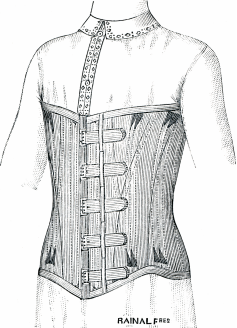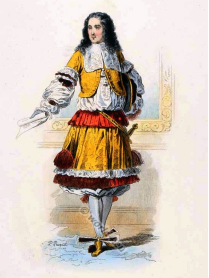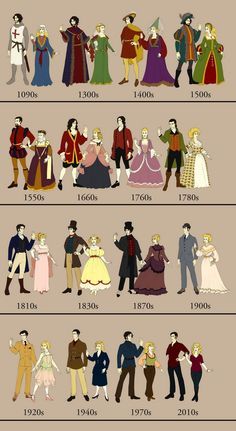Pink was originally a masculine color.
That’s right. Pink was actually thought to be a color for boys. In 1912, an article from a trade publication called Earnshaw’s Infants’ Department, declared that, since it was derived from red, “Pink is for the boys, and blue for the girls. The reason is that pink, being a more decided and stronger color, is more suitable for the boy, while blue, which is more delicate and dainty, is prettier for the girl.”
Jo B. Paoletti, historian and author of Pink and Blue: Telling the Girls From the Boys in America, believes the line was firmly drawn in the 1980s, when two things happened. First, it became more and more common for parents to find out the gender of their children while they were still in the womb. Excited moms and dads wanted to buy gender-specific items for their new little bundles of joy, and of course, retailers obliged. The other main reason, Paoletti theorizes, is because mothers who grew up wearing gender-neutral clothes and playing with toys that appealed to both boys and girls wanted their daughters to be able to revel in pink, lace, long hair, and Barbies. Marketers and advertisers made this choice seem natural.
This phenomena makes you think what exactly masculinity or femininity is, especially when it comes to appearances. Specifically, clothing.
A man that is interested in his appearance and spends his time grooming himself is usually considered a 21st century development. But actually, through the 19th century, there was certainly a trend for men to be well groomed and fashionable. Some men actually wore corsets during the 18th and 19th centuries. At the time this wasn’t necessarily common practice, and so men tried to be discreet about wearing corsets. Towards the mid 1800s, it was considered taboo, and the few men that did wear corsets started to become the subjects of ridicule.
Towards the late 19th century, while corsets were still worn discreetly by men, they were no longer quite so taboo. Companies began to offer corsets specifically designed for men and for everyday wear. While corsets were mostly worn for fashion purposes by both men and women, similar designs have also been worn by men for hundreds of years for medical purposes. Andy Warhol is said to have worn a corset to support his weakened back after being shot in 1968 until the time of his death.

a 19th century corset for men
By today’s standards, an upper-class man in 17th or 18th century Western Europe cannot be considered anything remotely close to “masculine”. Long, flowing wigs, bright colored fabrics, wide brimmed hats, stockings, heels…they were too flamboyant to even be considered feminine.
Again, this really breaks down the shallowness of “masculine clothing”.

A fashionable man in the reign of Louis XIV
Here’s another one for you. Ancient Greeks and Romans never wore pants, and equated the wearing of pants with savagery. Pants were originally associated with the Persians, Scythians, Sarmatians, Eastern and Central Asian peoples. The Greeks used the term anaxyrides for pants and thought that wearing pants was a sign of barbarism. They wore very simple clothes draped around the body or fastened with clasps and brooches. Usually made of wool, the tunic, was the most basic item of clothing. The Romans only began wearing pants when the Empire started extending beyond the Mediterranean. They began gaining popularity among Roman soldiers and would continue to remain popular throughout the Byzantine period and beyond.
Now, one can see the things that have been said so far and interpret it in whatever way they want. But here’s what I think should be the takeaway. The concept of masculinity and femininity, especially in appearances, are simply a social construct. There’s no further meaning to it. We can simply see how vastly it differs from culture to culture and time to time. Criticizing someone for dressing differently is simply denying the usual changing process of fashion as time goes by. It’s hard to take in, but it is what it is. It’s best if we just accept it and put our attention to more important topics.

